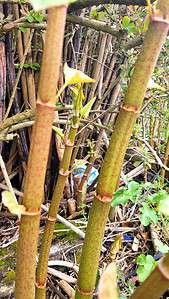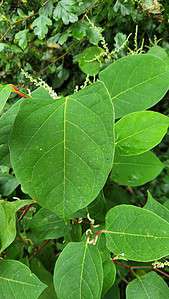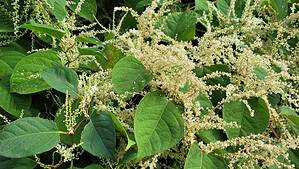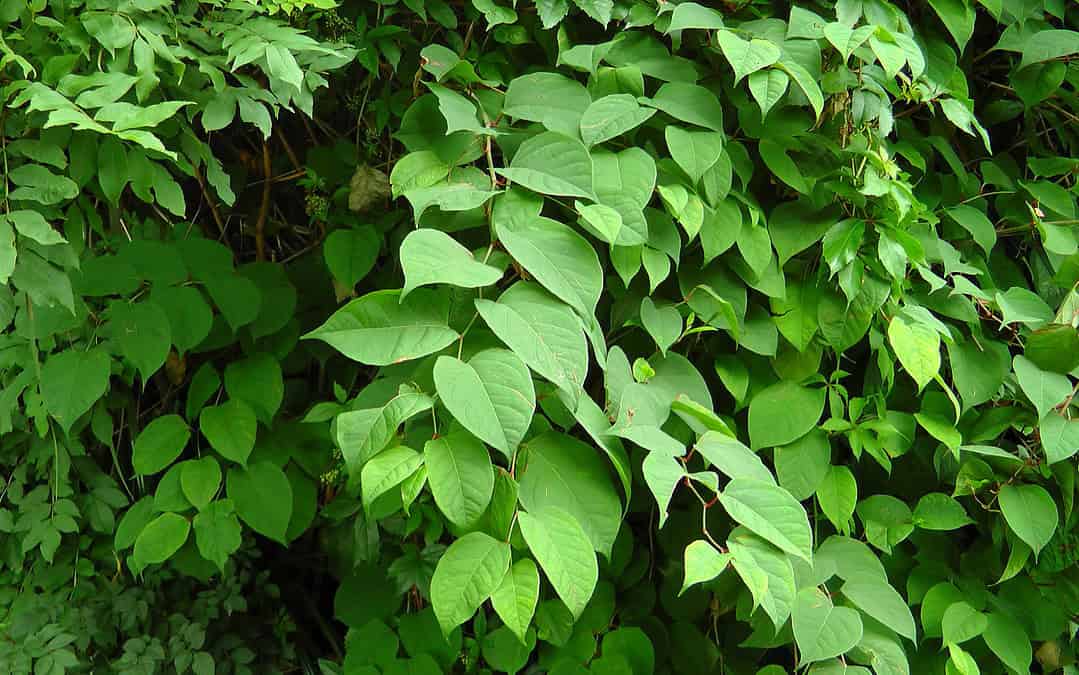What Does Japanese Knotweed Look Like?
Introduction
Ever stumbled upon a plant in your backyard and wondered, “Is this Japanese Knotweed?” Understanding what this invasive species looks like can be crucial for homeowners and environmentalists alike. So, how can you identify it?
A Brief Background
Before we dive into the specifics, let’s get familiar with Japanese Knotweed. Hailing from East Asia, this plant has traveled the world, often wreaking havoc on native ecosystems.
Recognizing Japanese Knotweed
The Stems
Japanese Knotweed stems are reminiscent of bamboo. They’re hollow and segmented, with a greenish-brown hue. Think of them like the stalks of asparagus but much tougher!

Stems of Japanese knotweed
The Leaves
These leaves aren’t your typical foliage. They’re broad, about the size of your palm, and shaped like a spade. In essence, if you can imagine a cross between a heart and a triangle, that’s the leaf you’re looking for.

Leaves of Japanese knotweed
The Flowers
Come late summer or early autumn, the plant bursts into a display of tiny, creamy white flowers. These flowers cluster together in spiky formations, adding an aesthetic appeal to what is otherwise a notorious plant.

The Flowers of Japanese knotweed
The Roots
Though not visible, the roots are a crucial identification point. They’re thick, black, and known to spread rapidly, penetrating deep into the ground. Sometimes, they even creep up to 2 meters in depth!
Why Identify Japanese Knotweed?
Environmental Concerns
This fast-growing plant can overshadow native species, depriving them of sunlight and nutrients. Ever seen a bully on the playground? Japanese Knotweed is the botanical equivalent, dominating wherever it goes.
Property Concerns
And it’s not just about the environment. Japanese Knotweed can damage building structures, pathways, and walls. If it finds a crack, it’ll grow through it, widening the gap and leading to potential structural hazards.
How to Differentiate from Similar Plants
Bamboo vs. Knotweed
While both have similar stems, bamboo leaves are narrower and longer. Bamboo also has nodes on its stems, unlike Knotweed.
Bindweed vs. Knotweed
Bindweed, often mistaken for Knotweed, is more vine-like. Its leaves are also smaller and heart-shaped, making differentiation easier upon closer inspection.
Dealing with Japanese Knotweed
Preventive Measures
The first step? Don’t let it grow! If you spot a young plant, remove it immediately. The earlier you catch it, the better.
Eradication Techniques
There are herbicides specifically designed for Japanese Knotweed. But remember, always consult with an expert before taking action. These plants can be persistent, and sometimes it requires a combination of methods to fully eradicate them.
Conclusion
Identifying Japanese Knotweed isn’t just about gardening expertise; it’s about protecting our environment and properties. With the knowledge you’ve gained, you’re now equipped to spot and deal with this invasive species. So, the next time someone asks, “What does Japanese Knotweed look like?”, you’ll have the answer!
FAQs
- Is Japanese Knotweed harmful to humans?
- No, it’s not toxic to humans, but its rapid growth can harm the environment and structures.
- How fast does Japanese Knotweed grow?
- Extremely fast! It can grow up to 10cm a day during its peak season.
- Can I get rid of Japanese Knotweed on my own?
- While you can attempt to, consulting with experts ensures complete removal.
- Is Japanese Knotweed the same as bamboo?
- No, although they might look similar, they are different species with distinct characteristics.
- What’s the best season to identify Japanese Knotweed?
- Late summer or early autumn, when it flowers, making it more recognizable.
